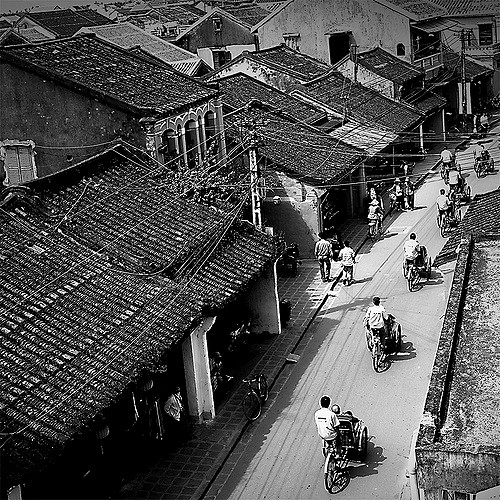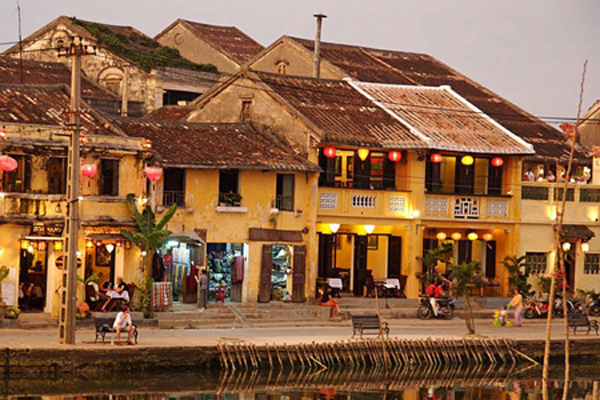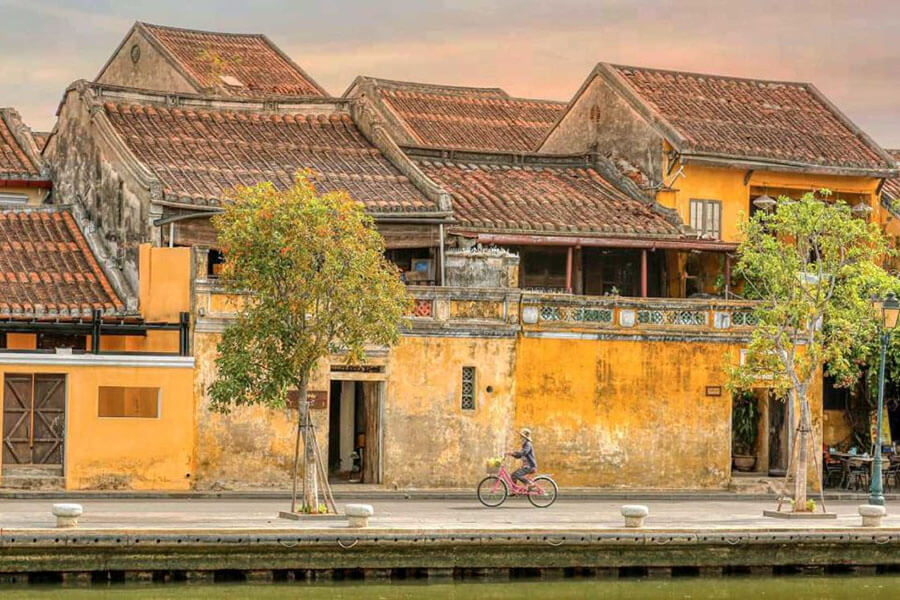This port city located 30 kilometers from Da Nang and nearly 800 kilometers south of Hanoi was also known under the name of Faifo in French...
Many foreign friends have been greatly impressed by their visit to Hoi An, a cultural and historical legacy that has no equal in Vietnam, a living museum of art and architecture, a human vestige rarely found in the world. In contrast to other ancient cities of Vietnam which, due to destructions by war and the tropical climate, contain only bits of evidence of what once existed (ramparts, palaces, tombs, temples...), Hoi An has preserved intact its former features.

This port city located 30 kilometers from Da Nang and nearly 800 kilometers south of Hanoi was also known under the name of Faifo in French colonial times. Some have surmised that Faifo could be a phonetic imitation of the Vietnamese words "phai pho" ("Yes, this is the street") supposedly said in answer to a question by foreigners: "Co phai pho khong?" (Is this the street?). But this is a rather far-fetched hypothesis. More probably Faifo could be de-rived from these two couples of words: Hoai pho (the port city of Hoai, or Hai Pho (the sea-port city).
In the 17th century Hoi An, as a centre of international trade, was a southern rival of Pho Hien, a port city in the North. Vietnam was then divided into two parts: Duong Ngoai (the Outer Region, known to Western navigators as Tonquin) with Thang Long (present-day Hanoi) as capital, and Duong Trong (the Inner Region, known to traders and navigators as Cochinchina) with Hue as capital. Economic development in the South was based on the open-door policy.

This, given a favorable international juncture, led to the growth of Hoi An, which boasted a good maritime location. In the wake of geographical discoveries of the late 15th century, European powers had drawn Asian countries into their trading orbit. Trading vessels - Portuguese, then Dutch, British and French - called at Hoi An and other Vietnamese ports. China's and Japan's foreign- trade policies had a direct or indirect impact on Hoi An. Starting from 1593, the shogunate issued special permits called shuin to Japanese traders wishing to purchase Chinese goods in Southeast Asia. This went on until 1636 and led to commercial transactions being conducted between Japan and Hoi An for several decades. Besides the overthrow of the Chinese Ming Dynasty by the Manchu Clung (1649) unleashed waves of Chinese emigration to Southeast Asia, including Hoi An.
According to historical documents, the memoirs of Christofore Borri in particular, Hoi An in the 17th century had a Japanese as well as a Chinese quarter. The Japanese settlement has left valuable vestiges: the Japanese Bridge, tombs, a stele on which was inscribed Japanese contributions to the building of a local pagoda... Toward the middle of the 17th century, because of the barriers set up by the Japanese administration, predominance in commerce fell into the hands of the Chinese, who eventually set up a village of Minh Huong (people from the country ruled by the Ming), with streets, pagodas, temples, seats of congregations...
Dutch merchants set up trading posts in 1636 and 1741. Trading vessels from other European countries also came. Hoi An became one of the ports of entry of Catholicism.
Starting from the 18th and 19th centuries Hoi An suffered gradual recession to the advantage of Da Nang which had been its outpost, following national and international political upheavals as well as topographical changes.
Although most of the architectural structure remaining in present-day Hoi An date from the 19th century this old port city evokes a rich cultural past with many elements - Cham, Viet, Japanese, Chinese and European. Many vestiges have resisted the passage of time and can be of a great interest to archaeologists and historians as well as tourists.



